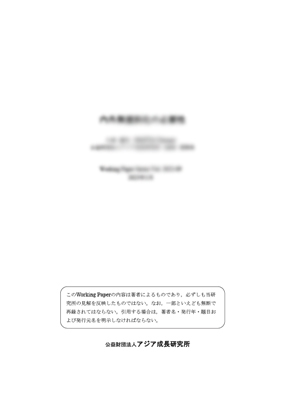Experiences with Foreign Workers in Singapore and Malaysia : What are the Lessons for Japan’s Labor Markets?

| Author | Eric D. Ramstetter |
|---|---|
| Date of Publication | 2016. 3 |
| No. | 2016-06 |
| Download | 277KB |
Contents Introduction
Singapore and Malaysia have a long history of relying heavily on foreign, immigrant workers in both high-skilled and low-skilled occupations. Ancestors of large portions of the local population in both countries were also immigrants. Correspondingly, economic policies have been designed to manage high levels of migration and foreign workers. In contrast, Japan limited both immigration and foreign workers quite strictly through the 1980s. Since the 1990s, however, the ratio of the stock of net inward immigrants to total population has grown much more rapidly in Japan than in Singapore or Malaysia, largely because the rapidly aging population and changes in worker preferences have resulted in strong demand for immigrant labor. Since the 1990s, Japanese policies have actively sought to entice highly skilled foreign workers and students to work and/or study in Japan. The primary purpose of this policy-oriented paper is to review the substantial economic literature on experiences with foreign workers in Japan, Singapore, and Malaysia and its implications for Japan’s labor markets and related policies.
